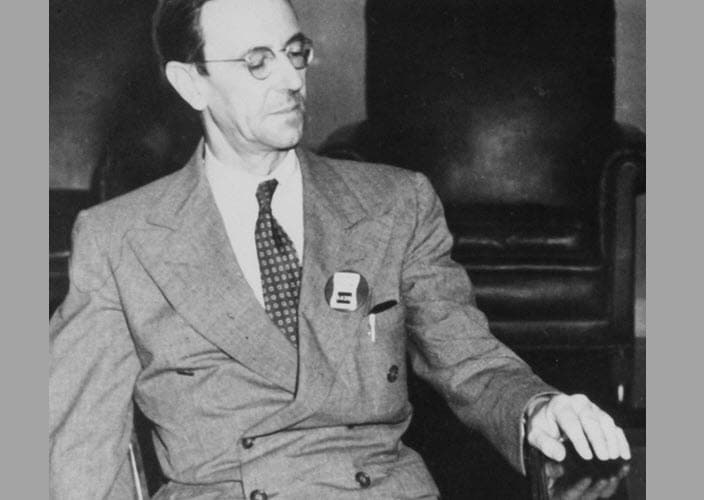Exploring the Quantum Frontier: Insights from James Chadwick

James Chadwick (20 October 1891 – 24 July 1974) was a British physicist. James Chadwick was awarded the Nobel Prize in Physics in 1935.
Life and Career
James Chadwick was born on 20 October 1891, in Bollington, United Kingdom. His academic journey began at Manchester High School, where his passion for physics and mathematics flourished. He went on to study Natural Sciences at the University of Manchester, and it was during this time that he first encountered the work of Ernest Rutherford, a renowned physicist who would become a significant influence on Chadwick’s career.
Chadwick’s academic prowess and dedication to research led him to work with Rutherford at the Cavendish Laboratory in Cambridge. Under Rutherford’s guidance, Chadwick conducted research on radioactivity and atomic structure, laying the foundation for his future contributions to nuclear physics.
His most significant and celebrated achievement came in 1932 when he discovered the neutron. Through a series of experiments, he demonstrated the existence of the neutral subatomic particle, which he named the neutron. This discovery provided crucial insights into the structure of the atomic nucleus and earned Chadwick international acclaim.
Chadwick’s discovery of the neutron was a landmark achievement that revolutionized the field of nuclear physics. His work significantly advanced the understanding of atomic and nuclear processes, paving the way for further research and applications in nuclear science. James Chadwick passed away on 24 July 1974, in Cambridge, United Kingdom
Award and Legacy
James Chadwick was awarded the Nobel Prize in Physics in 1935 in recognition of his groundbreaking discovery of the neutron. His legacy in nuclear physics extends far beyond his discovery of the neutron. Throughout his career, he continued to make significant contributions to the field, particularly in the study of cosmic rays and the development of nuclear detectors.
His research and discoveries laid the groundwork for numerous applications in nuclear science and technology, including nuclear power and medical imaging. His work continues to inspire physicists and scientists worldwide in their quest to unravel the mysteries of the atomic world.
Observer Voice is the one stop site for National, International news, Sports, Editor’s Choice, Art/culture contents, Quotes and much more. We also cover historical contents. Historical contents includes World History, Indian History, and what happened today. The website also covers Entertainment across the India and World.

